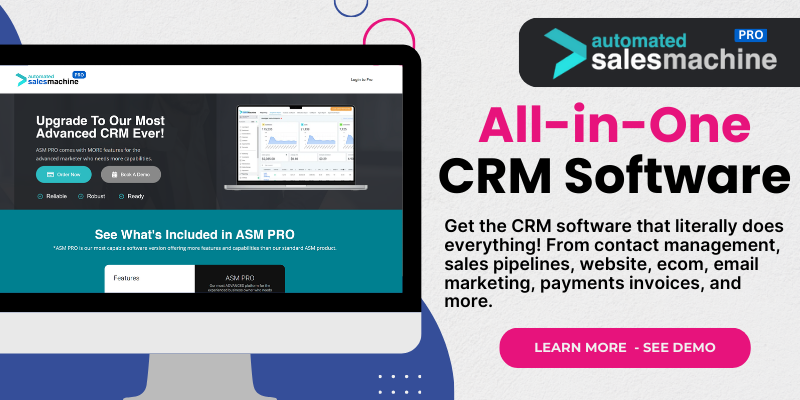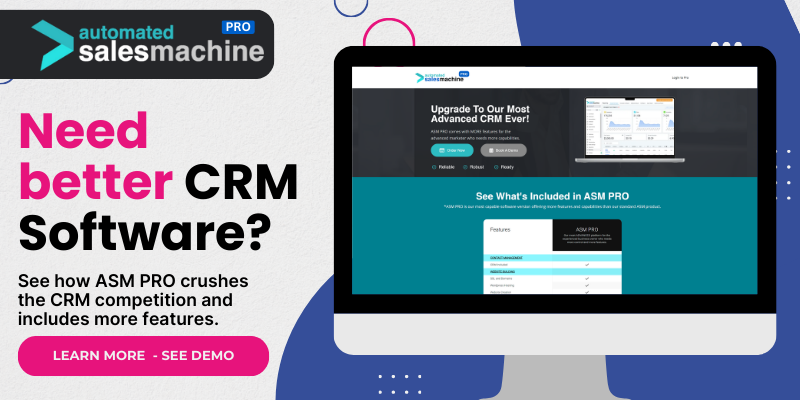Understanding CRM Software
What is CRM Software?
So, let’s dive right into it. CRM stands for Customer Relationship Management. It’s essentially a software tool that helps businesses manage their interactions with current and potential customers. The idea is pretty simple: keep all that customer info centralized so you can provide a better overall service.
From managing contacts to tracking sales, a good CRM can help streamline those processes and make everything run a bit smoother. If you’ve ever felt overwhelmed by spreadsheets and disorganized notes, trust me, a CRM can be a game-changer.
Moreover, they often come packed with analytics tools that let you get a bird’s-eye view of your sales and customer service processes. This means you can make informed choices tailored to what your customers need. Pretty neat, right?
The Importance of Using CRM Software
In my experience, using a CRM is crucial for businesses that want to scale. It’s not just about storing customer information; it’s about building stronger relationships. A great CRM allows you to track interactions over time, so you can recall details from previous conversations and personalize your approach.
Having all this information in one place helps my team operate more efficiently. When everyone has access to the same customer data, there’s less miscommunication, and we can avoid doubling up on tasks. In turn, this creates a smoother customer experience.
Besides, CRM systems can also help identify trends. Maybe you notice a particular product is consistently getting questions—knowing that can guide your marketing strategy or even product development. Keeping an ear to the ground has never been easier!
Types of CRM Software
When it comes to CRM software, they generally fall into three main categories: operational, analytical, and collaborative. Operational CRMs focus on automating the sales and customer service tasks, which can save loads of time.
Then you’ve got analytical CRMs, which dive into customer data and trends. They’re the detectives of the CRM world, helping you understand your customers’ behaviors and preferences.
Finally, there are collaborative CRMs that facilitate communication across various departments. For me, this type really shines when there’s a need for teamwork—like sales and customer service needing to be on the same page.
Current CRM Market Leaders
Salesforce
Ah, Salesforce—this is probably the big player in the CRM world everyone talks about. It’s versatile and offers a ton of features, making it suitable for beginners and pros alike. I remember first using it, and honestly, I was amazed at how customizable it is.
Salesforce allows for everything from managing your sales pipeline to tracking marketing efforts, all in one spot. Plus, they have a massive number of integrations with other apps, which means it can shimmy into your existing workflows pretty effortlessly.
That said, its initial learning curve can be a bit steep. But once you get over that hill, it’s worth it. Having that level of insight into your customer interactions is nothing short of impressive.
HubSpot CRM
Then there’s HubSpot, which is fabulous, especially for small businesses starting. What I truly love about HubSpot is that it offers a free tier that is genuinely robust. It really lets you hit the ground running without putting your wallet at risk.
HubSpot has this user-friendly interface and a lot of helpful resources to guide you. I found that their educational content is top-notch; it makes onboarding so much less painful!
The marketing automation features are also something worth mentioning. They enable businesses to create more personalized marketing campaigns based on customer interactions, which leads to better engagement.
ZohO CRM
Let’s not forget about Zoho! For those looking for something a bit more budget-friendly, Zoho CRM packs a punch without making you break the bank. I’ve had great success using this platform, especially for small to medium-sized business needs.
One of my favorite Zoho features is the customization options. You can tailor it to fit your specific industry needs, which is fantastic. It feels less like a one-size-fits-all solution.
Plus, Zoho integrates seamlessly with a variety of other business tools, which can streamline many aspects of your operations and save you time and energy.
Evaluating Your CRM Needs
Define Your Goals
Before jumping into a CRM, take a minute to outline your goals. What are you hoping to achieve with a CRM? For some, it’s about simply organizing customer contacts. For others, it’s about integrating sales and marketing efforts.
When I first looked into CRM software, I made a list of the features that would truly benefit my business. It helped narrow down the choices significantly. Being clear about your goals saves you from getting overwhelmed by all the options.
Also, think about how you want the CRM to grow with you. You don’t want to chase after a new system every few years because your needs have changed.
Assess Your Team’s Tech Savvy
Another key aspect is figuring out how tech-savvy your team is. Some advanced CRMs come with a whole suite of features, but they can also be complex. Getting everyone on board with using a new tool can be its own challenge.
Training sessions are essential; whether it’s formal or informal, creating that knowledge base within your team is crucial. I’ve often found that hands-on training sessions yield the best results. The more familiar your team is with the CRM, the more effectively they’ll use it.
Consider bringing in a CRM that has a more straightforward user interface if you have team members who might struggle. It’s better to have a simpler system everyone can use than a complex one that only a few can master.
Budget Considerations
You also need to set a realistic budget. CRMs can run the gamut from free options to tiered pricing, so knowing what you can afford will save you a headache down the line. I’ve seen companies stretch their budgets too thin trying to chase after a fancy CRM with features they don’t even use.
Look for vendors that offer a tiered pricing model. This way, as your business grows, you can scale up your CRM without switching platforms. It makes for a smoother transition and less disruption for your team.
Test driving a few options can also give you a sense of what you might be in for. Many CRMs offer free trials, so don’t hesitate to take advantage of those to find the perfect fit!
CRM Trends to Watch
Automation and AI Features
Let’s talk trends. One of the biggest things I’ve noticed is the surge in automation and AI features in CRMs. These tools are making it easier to automate repetitive tasks like follow-up emails, which frees up our time to focus on nurturing client relationships.
AI allows for predictive analysis, meaning you can gauge future customer behavior based on data trends. This has changed how I strategize my marketing efforts; it’s almost like having a crystal ball!
Some CRMs now even offer chatbots that can handle basic customer inquiries. While I think nothing beats human interaction, these tools can make initial customer contact much faster.
Integration with Other Tools
The integration capability of CRMs is becoming increasingly important as businesses use a variety of tools. Whether it’s email marketing, project management, or social media platforms, a CRM that plays well with others is vital. I’ve found that using integrated systems maximizes efficiency and provides a cohesive experience.
For example, linking your CRM to your email marketing platform allows you to streamline campaigns based on customer segmentation effortlessly. It helps me pinpoint who’s opened my emails and what actions they’ve taken afterward.
When considering a CRM, always check their integration possibilities. The less time you waste on switching between platforms, the better your productivity can be.
Mobile Optimization
Last but certainly not least, mobile optimization is a trend I can’t stress enough. More people than ever are working remotely or on the go. In my own work life, I can’t always be at my desk!
Having a CRM that’s mobile-friendly lets you access crucial customer data anytime, anywhere. It means I can reply to a client on a whim without waiting until I get back to the office. That kind of agility is invaluable.
Look for CRMs that offer fully functional mobile apps. This can make a world of difference for your team’s productivity and responsiveness!
FAQs
1. What does CRM stand for?
CRM stands for Customer Relationship Management. It’s a tool that helps businesses manage their interactions with customers.
2. Why is CRM software important?
CRM software is important because it helps businesses streamline their processes related to managing customer relationships. It increases efficiency and provides insights that can improve customer service!
3. What are some popular CRM software options?
Some popular CRM software options include Salesforce, HubSpot, and Zoho CRM. Each has its strengths and fits different business needs.
4. How do I choose the right CRM for my business?
Choosing the right CRM involves defining your goals, understanding your team’s tech skills, and considering your budget. Don’t forget to investigate integration options and mobile usability!
5. What are some trends in CRM software right now?
Trends include increased automation and AI features, better integration with other tools, and a greater focus on mobile optimization. These trends help businesses be more efficient and responsive!

